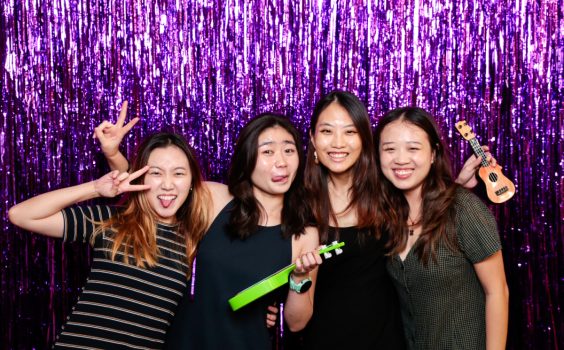
Imagine scrolling through your favourite social media app. You see a photo that catches your eye, and within seconds, you double-tap to like it. This instant engagement is no accident – it’s a carefully designed feature that taps into our natural desire for immediate gratification. In a world where waiting is often seen as an inconvenience, the ability to get instant image results is a powerful motivator that shapes our online behaviour.
But immediate image results are more than just a convenience, though. They satisfy our brain’s craving for quick rewards. When we see something visually appealing, our brains release dopamine, the ‘feel-good’ neurotransmitter. This immediate gratification reinforces our desire to continue engaging with visual content, creating a cycle of constant interaction. But what is it about these quick visuals that keep us hooked? Let’s dive deeper into the psychology behind our love for instant image results.
The psychology of instant gratification
Instant gratification refers to the desire to experience pleasure or fulfilment without delay. This concept is deeply rooted in our psychology and has evolved over centuries. In the past, waiting for rewards was a part of life, whether it was waiting for crops to grow or for a letter to arrive by mail. However, the digital age has drastically shortened our patience, especially when it comes to consuming information.
Our brains are wired to seek out rewards, and instant image results provide a quick and satisfying payoff. When we see an image that we find interesting or beautiful, our brains respond by releasing dopamine. This rush of dopamine not only makes us feel good but also encourages us to seek out more of these pleasurable experiences. This is why we find ourselves endlessly scrolling through image-heavy platforms like Instagram and Pinterest.
The role of visual content in online behaviour
Visual content plays a crucial role in how we interact online. Images are processed 60,000 times faster than text by the human brain, making them an incredibly efficient way to convey information. This efficiency is why image-based social media platforms are so popular. They allow us to consume vast amounts of information quickly and with minimal effort.
Moreover, visuals are more engaging than text alone. They can evoke emotions, tell stories, and capture our attention in ways that text cannot. This is particularly important since, undeniably, attention spans are shrinking. The ability to grab and hold someone’s attention with a single image is invaluable in the crowded online space.
The appeal of immediate image results
The appeal of immediate image results is multifaceted. Firstly, they cater to our inherent need for instant gratification. When we receive quick feedback, such as likes or comments on a photo, it reinforces our behaviour and encourages us to continue sharing visual content.
Secondly, immediate image results provide a sense of control. Life may often feel unpredictable, so being able to instantly see the results of our actions – whether it’s a search query or a social media post – gives us a feeling of mastery over our environment. This control is comforting and can even be addictive.
Thirdly, the aesthetics of images contribute to their appeal. High-quality visuals can be mesmerising and offer an escape from the mundane aspects of daily life. Regardless of if it’s stunning travel photography, delicious food imagery, or heartwarming pet photos, beautiful images provide a momentary escape and a quick mood boost.
The impact of immediate image results on social media
Social media platforms are built on the premise of instant gratification. The ability to instantly share and receive feedback on images has transformed how we communicate and interact. Platforms like Instagram and Snapchat capitalise on this by making image-sharing quick and seamless.
The impact of this on our behaviour is significant – we are more likely to engage with content that provides immediate rewards, such as likes and comments. This engagement, in turn, drives the algorithms that determine what content we see, creating a feedback loop that prioritises visually appealing and engaging posts.
Moreover, the pressure to receive immediate feedback can influence the type of content we share. Users often curate their posts to maximise likes and comments, which can lead to a homogenisation of content. While this can stifle creativity, it also pushes users to constantly seek out new and innovative ways to capture attention with their images.
Why quick visuals keep us hooked
Quick visuals keep us hooked because they offer a combination of instant gratification, aesthetic pleasure, and social validation. They cater to our desire for quick rewards and our need to feel connected and appreciated by others. This powerful combination is why we can spend hours scrolling through image-heavy platforms without even realising it!
The speed and ease with which we can consume visual content also play a role. Unlike text, which requires more cognitive effort to process, images are instantly understood. This makes them ideal for quick consumption in our fast-paced world. The ability to quickly digest and respond to visual content ensures that we keep coming back for more.
Conclusion
Immediate image results satisfy our brain’s craving for quick rewards, provide a sense of control, and offer aesthetic pleasure. In the digital age, where attention spans are short and time is precious, the ability to quickly consume and respond to visual content is more valuable than ever.
If you’re looking to capture and share these moments of instant gratification in a unique and personalised way, consider Cloud Booth! Use photography for a grand time at your event with our personalised photo booth packages. Whether it’s a wedding, corporate event, or party, our photo booth in Singapore will provide your guests with instant image results they can cherish. Check out Cloud Booth for the best photo booth experience, and make your next event unforgettable!

